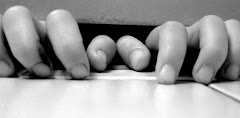 Is C.S. Lewis one of your favorite Christian writers? Do you think Schindler’s List is a great movie? Do you like Impressionist paintings more than contemporary art? Is Robert Frost your idea of a good poet? Does a cathedral impress you more than Bauhaus minimalism? Does seeing the St. Louis Gateway Arch up close and personal give you goose bumps?
Is C.S. Lewis one of your favorite Christian writers? Do you think Schindler’s List is a great movie? Do you like Impressionist paintings more than contemporary art? Is Robert Frost your idea of a good poet? Does a cathedral impress you more than Bauhaus minimalism? Does seeing the St. Louis Gateway Arch up close and personal give you goose bumps?
If you answer yes to more than one of these questions, then your taste is decidedly Middlebrow.
Welcome to Middlebrow world. Welcome to my world.
What is Middlebrow? I’m not exactly sure, but for starters it means neither Highbrow nor Lowbrow. What is Highbrow? Here’s my stab at it: Highbrow aims at art for its own sake, art that transcends (and often offends) cultural sensibilities, art that provides something original, something shockingly new to the viewer. For that reason alone Highbrow art is likely to be rejected by most people as either useless or immoral. The reward of Highbrow art is, first, the art itself, but, second, the status it confers on its followers as elites who live in the rarified air far above the maddening crowd. Lowbrow art, very much like high art, also aims at art that is its own reward, but this art taps into the most common (and therefore vulgar) tastes of a culture’s sensibilities. Rather than challenging the culture, lowbrow completely gives in to its lowest inclinations and at some point becomes indistinguishable from entertainment.
So what is Middlebrow? Middlebrow art is art that attempts to create something beautiful and challenging but that challenges us without rejecting our cultural sensibilities—or, at least, not all of them. Middlebrow art attempts to serve as a source of moral edification that is drawn, to paraphrase Lincoln, from the better angels of our culture. Middlebrow Art often wants to teach us something and not merely exist for its own aesthetic warrant—unless that aesthetic warrant is beauty.
The Middlebrow audience is scorned by elites for not being transgressive enough, for being too wedded to vulgar, bourgeoisie values. It is mocked by lowbrow fans for being pretentious. Both charges may be correct. I somehow suspect, however, that the single best measure of the health of a civilization is the size and intellectual vigor of its Middlebrow audience, the audience that seeks pleasures of the mind but that also understands itself as having been given a cultural heritage worthy of moral defense and protection.
 The British economist J.M. Keynes apparently would summarily judge people’s character by the quality of their hands. Okay, that’s nuts. Still, I confess to being drawn to hands myself. I love all manner of hand gestures in the movies, big and small, and I, too, notice people’s hands quite carefully. Unfortunately, my own hands say, “meat cutter at the deli” more so than “aristocrat,” but one lives with the hand one was dealt. (Sorry, couldn’t resist.) This picture is of Harvey Hill’s hand, taken backstage of a college theater. By the way, Harvey is a terrific model chiefly for one reason: he poses exactly as I ask him without question or complaint. He lets me be the photo tyrant I was born to be. We’ll be walking along a path, and I’ll say, “Hill, put your face in that hole in the tree so I can take a picture.” In goes his face. He’s good that way.
The British economist J.M. Keynes apparently would summarily judge people’s character by the quality of their hands. Okay, that’s nuts. Still, I confess to being drawn to hands myself. I love all manner of hand gestures in the movies, big and small, and I, too, notice people’s hands quite carefully. Unfortunately, my own hands say, “meat cutter at the deli” more so than “aristocrat,” but one lives with the hand one was dealt. (Sorry, couldn’t resist.) This picture is of Harvey Hill’s hand, taken backstage of a college theater. By the way, Harvey is a terrific model chiefly for one reason: he poses exactly as I ask him without question or complaint. He lets me be the photo tyrant I was born to be. We’ll be walking along a path, and I’ll say, “Hill, put your face in that hole in the tree so I can take a picture.” In goes his face. He’s good that way.
 If we have only hoped in Christ in this life, we are of all men most pitiable. 1 Corinthians 15:19
If we have only hoped in Christ in this life, we are of all men most pitiable. 1 Corinthians 15:19





.jpg)



